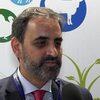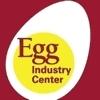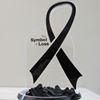Explore all the information on
Poultry management
Poultry management usually refers to the husbandry practices or production techniques that help to maximize the efficiency of production. Sound management practices are very essential to optimize production. Scientific poultry management aims at maximizing returns with minimum investment. A carefully controlled environment that avoids crowding, chilling, overheating, or frightening is almost universal in poultry farming. Cannibalism, which expresses itself as toe picking, feather picking, and tail picking, is controlled by debeaking at one day of age and by other management practices. The feeding, watering, egg gathering, and cleaning operations are highly mechanized. Birds are usually housed in wire cages with two or three animals per cage, depending on the species and breed, and three or four tiers of cages superposed to save space. Cages for egg-laying birds have been found to increase production, lower mortality, reduce cannibalism, lower feeding requirements, reduce diseases and parasites, improve culling, and reduce both space and labour requirements.
Annelies Kers (Utrecht University) speaks on the relation between the gut microbiome of chickens and their environment, during the 11th Symposium on Gut Health in Production of Food Animals in St. Louis, USA....
Comments : 0
Recommendations: 0
Mr. O.P. Singh, Managing Director of ABTL Enzymes, shares his experience and tips on some steps to develop a strong brand in this sector...
Comments : 0
Recommendations: 4
If there is one thing that has always characterised Liptosa , it is its entrepreneurial and innovative spirit , developing and manufacturing a wide range of solutions for the national and European market, and its firm commitment to internationalisation, reflected in its presence in more than 60 countries around the world . There is therefore no doubt about the fundamental role played by the Regulatory Affairs Department within the company and its crucial role in...
Comments : 0
Recommendations: 1
Poultry industry experts at the 2024 Latin American Poultry Summit will present information on topics that address avian influenza concerns. The program is organized into four sessions, and the first two sessions will be “Epidemiology of Avian Influenza” and “Vaccination.” Each session will feature two speakers followed by a panel discussion. The Summit is presented by the International Poultry Expo (IPE), part of the International Production & Processing Expo...
Comments : 0
Recommendations: 0
‘Smothering’ in poultry occurs when birds mass together, often on top of each other, resulting in death from suffocation (Bright and Johnson, 2011). The small number of reports documenting the incidence of smothering indicate that it accounts for a substantial proportion of overall mortality in free range layer flocks (Barrett et al., 2014; Bright and Johnson, 2011). In 2019 Australian Eggs Limited funded the Animal Welfare Science Centre and the Veterinary Epidemiology...
Comments : 0
Recommendations: 0
I. Introduction It is expected that the global demand for livestock products will increase by 70% by the year 2050 (Gerland et al., 2014). As one of the most high-protein and environmentally friendly sources, egg production is an important human food source. Intensive egg production enables the production of cheap, nutritious and readily available human food; however, one of the challenges is to ensure the production systems also can meet the birds' needs, including comfort,...
Comments : 0
Recommendations: 0
The common bed bug (Latin name Cimex lectularius) is part of a group of blood-feeding parasites called Cimicids. The common bed bug was mostly eradicated in North America in the 1960s. Then, in the 1990s, large cities such as New York, Chicago, Cincinnati, Toronto, Montreal and Winnipeg saw a rise in bed bug infestations that spread throughout the U.S....
Comments : 1
Recommendations: 1
This newsletter provides an overview of silvopasture-based poultry production, and potential benefits and challenges of adopting this system as a largescale or small-scale producer. Silvopasture is an agroforestry practice in which trees, forages, shrubs, and animals are intentionally integrated into a single land...
Comments : 3
Recommendations: 2
Stocking density is a critical factor to consider for optimum welfare of commercial broilers Stocking density is typically defined in terms of the number of birds per unit area or the amount of space provided on per bird basis. In commercial production, stocking density of a broiler...
Comments : 1
Recommendations: 0
The first few days of life are some of the most important in chicks' lives. During this time, chicks start developing and set themselves up for the rest of their lifetime. The husbandry decisions made at this point can impact the birds' growth, development, health and welfare. This newsletter will focus on three important...
Comments : 0
Recommendations: 0
Spondylolisthesis, often called ‘kinky back’, is a deformity that affects broiler chickens’ spines. The deformity occurs in the fifth and/or sixth vertebrae (T6) and leads to spinal cord compression making it hard for birds to walk, and in severe cases it can cause...
Comments : 0
Recommendations: 0
Feather sexing, a relatively convenient method to separate male and female day-old broiler chicks, is no longer available especially in Australia due to a shift from slow feathering to fast feathering parent stocks (England et al., 2021). Therefore, other convenient ways for chick sexing are needed for research trials. Vent sexing is a possibility, but the time required to successfully vent sex and biosecurity restrictions of hatcheries can make this difficult. Sex may also be determined...
Comments : 0
Recommendations: 0
1. Introduction Air emissions from concentrated animal feeding operations (CAFOs), are reported to cause health impacts for both the animals and humans exposed [1–3]. The concentration of fine particulate matter (PM 2.5 ) and gases emitted from CAFOs can have regional impacts on people living in the area around them [3–7]. More recent studies show that emissions from agricultural facilities can cause the nitrogen enrichment of soils and waterways [8]. While...
Comments : 0
Recommendations: 0
1. Introduction Animal welfare is a fundamental component of sustainability, agricultural development and food security. In order for a livestock system to be sustainable, it should be sustainable economically, environmentally and ecologically, and at the same time, it should be accepted ethically and socially [1–3]. Today, a product of animal origin is not considered sustainable unless the social demand for welfare of the production animals is satisfied [1]. Animal...
Comments : 0
Recommendations: 0


Changing Feed Industry Imperatives Call For A Closer Look At On-Site Aflatoxin Test Methods
Suggested link
1. Introduction In light of the challenges posed by climate change, economic crisis, overpopulation, and high global demand for protein, poultry production emerges as a more environmentally friendly option compared to meat from livestock. It has a lower impact on greenhouse gas emissions and demonstrates higher conversion rates [1]. Additionally, poultry production requires fewer resources and has a faster production cycle, making it an appealing protein source [2]. However, the...
Comments : 0
Recommendations: 0
by Sam Shafer
Particulate matter (PM) can damage bird lungs. Now poultry scientists gather data to give a fuller picture of the effects of PM in different housing systems
Poultry scientists are working to better understand the impacts of particulate matter (PM) on bird health and production. Particulate matter includes very small particles of feed, feathers, animal waste, and dander. Researchers have found that PM...
Comments : 0
Recommendations: 1
Free-range commercial layer farming in Australia has been increasing for the last decade in response to consumer demand for free-range eggs. To meet this demand, there is a focus on research to optimise free-range system design and management. A range of external factors have been shown to impact hens’ daily outdoor range use including weather conditions, time of day, season and range enrichments (Richards et al., 2011; Larsen and Rault, 2021). Sunlight intensity and ultraviolet...
Comments : 0
Recommendations: 0
1. Introduction Listeria monocytogenes is a foodborne pathogen of notable concern, especially due to its growth under household refrigeration temperatures (40 ◦F, 4 ◦C) and at a pH range of 4.5 to 9.6 [1–3]. Listeria monocytogenes has been subdivided into four phylogenetic evolutionary lineages due to variations in ecology recombination rates and genomic content [4,5]. Lineage I consist of most human clinical isolates and includes serotypes 1/2b, 3b, 3c, and 4b...
Comments : 0
Recommendations: 0
Watery and sticky droppings in layers have been a problem in the egg industry for years. Wet droppings or diarrhea in chickens are early indicators of intestinal distress and can give a producer crucial information about the general gut health of their flock. Poultry litter becomes wet when the rate of water addition exceeds the rate of removal. Poor quality ingredients, toxins, pathogens and nutrient imbalances can cause wet litter directly by altering normal digestive physiology or...
Comments : 1
Recommendations: 1




.jpg&w=3840&q=75)






.jpg&w=3840&q=75)








.jpg&w=3840&q=75)














